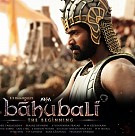Taking the current scenario in the film industry into consideration, inventing a plane looks more facile than making a successful film. Every director, steps into the field with tons of expectations and dreams of changing the fortune of the industry but struggles in the due course because of various bottlenecks which hinder their progress. They finally end up doing what their predecessors did - follow the trend which keeps changing from time to time. They try to go with the flow, offer just what the end user wants even though it could be nothing new or innovative while that’s what the audience keeps irking about. But when they actually serve what they are asked for, they get a reply ‘hey this is not practically possible yaar’.
It’s so easy to pinpoint one successful director and say why can’t the rest put in some effort like him, but it just doesn’t work like that. Filmmaking is not a one man show. You have so many non-permissive facets which bring down the creative freedom of a director. From budget constraints to hero’s image to producer’s interest to fans' expectations, from cast and crew’s sluggish work nature to censor certification, there are numerous challenges. There are plenty more like the release windows and baseless allegation issues which creep out from nowhere like sleeper cells during the film’s release.
I would like to share my thought on just two of the fore stated issues since I feel they are important enough to be addressed sooner than later.
The Tax Trauma
Censor certification for a film is mandatory. Only after getting a green chit from the Central Board for Film Certification (CBFC), can a film be publicly exhibited. And based on its content, a film will be certified with a U, U/A or an A which doesn’t affect a film’s outcome but however has its ramifications in the tax component of a film. Only films which are certified with a U by CBFC are eligible to get the 30% entertainment tax exemption in Tamil Nadu which is decided by a separate viewing committee. The rule also says that you will have to name your film’s title in Tamil and it should promote the language and its culture.
The consistency in the certification needs to be given some thought. One wonders if the board is getting a little too tough in the recent years.
For example, a film like O Kadhal Kanmani, which carries a clean Tamil title with no violence or profanity in its content, gets a U/A just because it talks about a live-in relationship couple? Which era are we living in? When the West is making films based on incest and gay relationships, a film that talks about live-in is stamped with a U/A whereas a film with scenes of skimpily clad women gets a ‘U’.
30% is huge for a producer to bear that too in the current unpredictable trade trend. This forces the directors to really limit their scope. He needs to constantly think and tweak his content from a ‘U’ perspective. When there is so much at stake, its high time that a U/A or an A film gets at least a reduction in the entertainment tax rate by 10 to 15 percent. This sure will provide some respite for the filmmakers.
Social Media and its tolerance level!
When the audiences are exposed to a vastly equipped Western filmmaking style with expensive fancy CGI works, the Tamil film directors are forced to make cross cultural films that are required to carry all the necessary local sentiments molded with Western style of making. If even one scene (for that matter a single poster) carries any slight resemblance to a foreign film, the director gets a 'copycat' tag for getting inspired and even ends up getting trolled. No matter how good you make a film, it will still have a fair share of haters. But trolling a director for one’s personal distaste is not correct. Just imagine the plight of a director who invests two long years of his life ideating a script and executing it amidst many obstacles and constraints. It is not fair to see him (her) get bashed up by a bunch of social networkers just because the film doesn’t meet the standards of some foreign product which is produced in a scale hundred times larger than that.
The director’s plight these days is unenviable. On the one hand, he (she) has to work towards satisfying his producer and on the other hand, he has to satisfy the requirement of a demanding audience. Within this, he has to bring out his creativity and establish his career. It is indeed straddling multiple horses at the same time. Under these challenging conditions, it sure is difficult for directors to surface successfully and my heart goes to all those people who have made it and also attempting to make it. Hats off to them!












